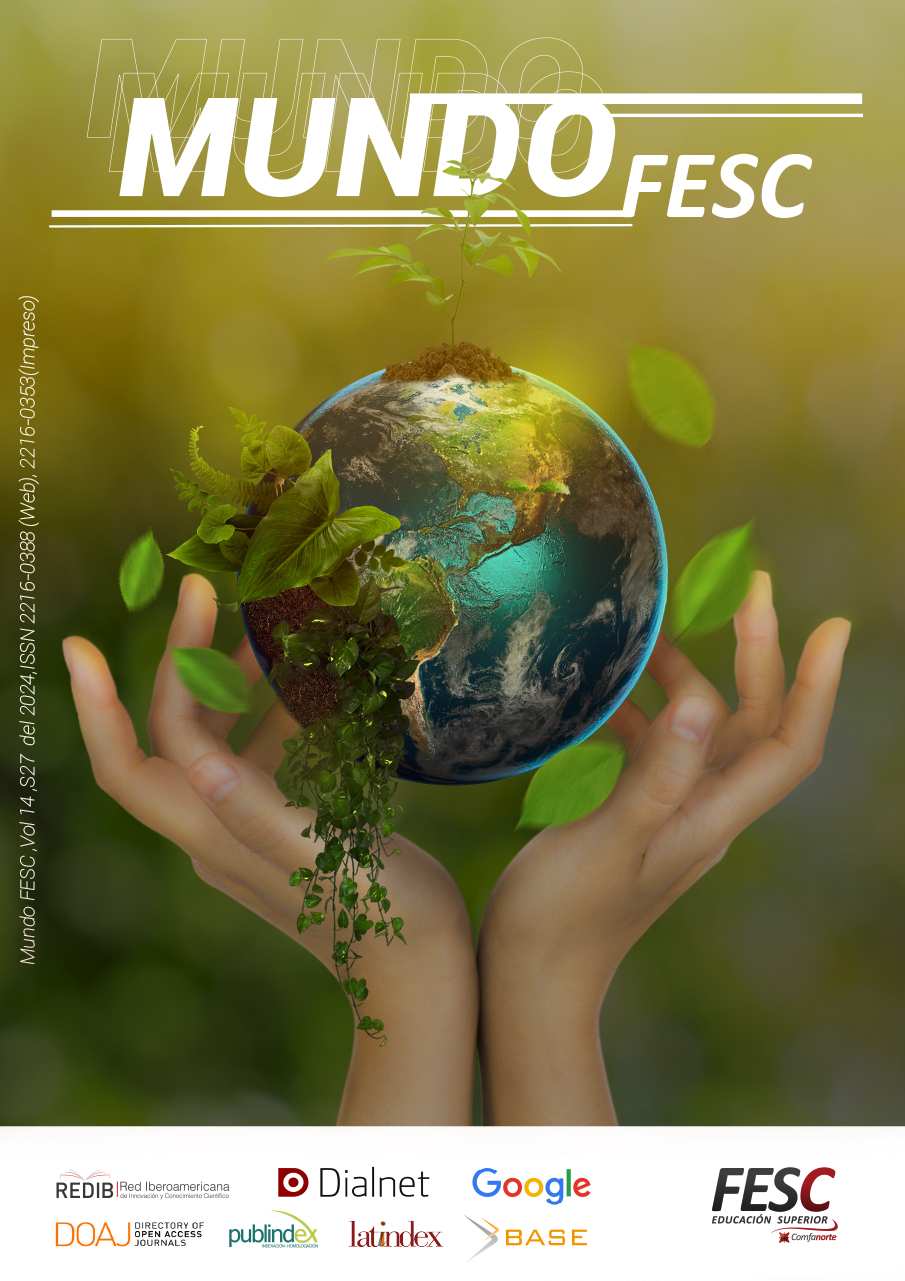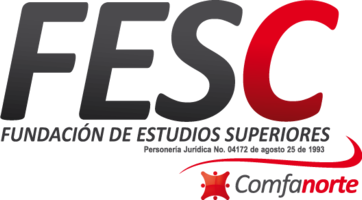Teaching practices in nursing education: Encounter between the disciplinary and the pedagogical.
DOI:
https://doi.org/10.61799/2216-0388.1593Keywords:
Nursing education, Educational strategies, Higher education, Teacher education, Microteaching, Higher education teacher (words from the Unesco thesaurus).Abstract
Quality education in nursing requires educational
transformation processes, which involve teachers in
reflecting on the educational practice and teaching
processes they develop. Objective: To learn about
teaching practices in undergraduate nursing
education. Methods: An integrative review, secondary
research type, which included 23 articles was carried
out. The search was performed in the following
databases: PubMed, Scielo, Ebsco and Google
Schoolar; applying the filters of free access to full text,
published between 2014-2023, in language: English,
Spanish and Portuguese. The recommendations of
the PRISMA 2020 declaration were followed for the
search and selection of articles; and the thematic
analysis proposed by Dhollande et al. Results: Of
the 23 articles, nine corresponded to quantitative
studies, nine to qualitative studies, three to literature
reviews, one mixed study and one theoretical
essay; mostly conducted in Latin America. From the
thematic analysis emerged the following themes:
1. The purpose of teaching and meaning of being a
teacher; 2. Teaching practices between disciplinary
and pedagogical knowledge; 3. Teaching methods
between tradition and innovation. Conclusions:
Teaching methods represent the thematic mostly
approached from research in the educational field in
different contexts. Nursing professors are recognized
as role models and examples to follow, mediators
in student learning, who see teaching as an act of
love and social commitment. Professors privilege
disciplinary knowledge and clinical experience over
pedagogical knowledge in the practice of teaching,
which makes it imperative to develop pedagogical
training programs for university professors, in order
to guarantee quality education and respond to the
commitment to contribute to the development of
nursing as a discipline and profession.
Downloads
References
[1]. “Materiales – Redcaspe”. Redcaspe – Programa de Habilidades en Lectura Crítica Español. Accedido el 6 de mayo de 2024. [En línea]. Disponible: https://redcaspe.org/materiales/
[2]. A. Blanié, M. A. Amorim y D. Benhamou, “Comparative value of a simulation by gaming and a traditional teaching method to improve clinical reasoning skills necessary to detect patient deterioration: a randomized study in nursing students”, BMC Med.Educ., vol. 20, no. 1, febrero 2020. DOI: https://doi.org/10.1186/s12909-020-1939-6
[3]. A. Choperena Armendáriz, “Una aproximación a la historia de la profesionalización de la Enfermería, desde la historia de los conceptos”, Temperamentvm, vol. 11, no. 21, p.t10006, ene. 2020.
[4]. A. M. Heredia y K. Espíndola, “Los procesos de profesionalización de la enfermería: reflexiones a tiempo”, Territorios del cuidado, vol. 1, no. 2, pp. 7-21, diciembre 2017.
[5]. C. L. Bucheli, “Prácticas de enseñanza ante la diversidad en el contexto universitario”, Tesis de Maestría, U. Javeriana, mayo 2019. [En línea]. Disponible en: http://hdl.handle.net/10554/43701.
[6]. C. M. Moreno Mojica y J. A. Barragán Becerra, “Prácticas pedagógicas y procesos de aprendizaje: configuración e institucionalización en la disciplina de enfermería”, ANF, vol. 26, no. 46, pp. 165–188, dic. 2018.
[7]. C. M. Moreno y J. A. Barragan, “La práctica pedagógica del docente de enfermería: del conductismo al constructivismo”, Prax. saber, vol. 11, no. 26, p. e10255, jun. 2020. DOI: https://doi.org/10.19053/22160159.v11.n26.2020.10255
[8]. C. Toronto, R. Remington, “A step-by-step guide to conducting an integrative review”, Cham, Suiza: Springer Nature; 2020. DOI: https://doi.org/10.1007/978-3-030-37504-1
[9]. Conferencia Regional Educación Superior (CRES). “Declaración y Plan Acción”, junio 2018. [En línea]. Disponible en: www.universidad.edu.co/wp-content/
uploads/2018/10/PropuestaPlanDeAccionCres2018.pdf
[10]. E. E. Suh, J. Ahn, J. Kang y Y. Seok, “The Development and Application of Drama- Combined Nursing Educational Content for Cancer Care”, Int. J. Environmental Res.Public Health, vol. 18, nº 18, p. 9891, septiembre 2021. DOI: https://doi.org/10.3390/ijerph18189891
[11]. E. O. Lozano-González, “Meaning of Teaching and Formative Processes of Teachers in the Area of Health: The Beginning of Teaching”, Rev. Electr. Educare, vol.24, no. 1, pp. 1–21, Jan. 2020. DOI: https://doi.org/10.15359/ree.24-1.14
[12]. E. Von Elm et al. “Declaración de la iniciativa STROBE (Strengthening the Reporting of Observational Studies in Epidemiology): directrices para la comunicación de estudios observacionales”. Rev. Esp. Salud Publica, Madrid, vol. 82, no. 3, pp. 251-259, jun. 2008. DOI: https://doi.org/10.1590/S1135-57272008000300002
[13]. F. Jahromi, N. Pournoroz, M. Golestan, B. Mahdood, “The Effect Of New Training On Nursing Students' Learning”. Int J Med Invest, vol 11, no. 4, pp. 82-92, diciembre2022.
[14]. F. O. M. Osuna and K. L. A. Mata, “Identidad profesional docente: ¿qué significa ser profesor?”, ESJ, vol. 11, no. 32, nov. 2015.
[15]. G. Edelstein, “Problematizar las prácticas de la enseñanza”. Perspectiva, vol 20, no.2, pp. 467–482, julio 2002.
[16]. Hong, Quan Nha et al. ‘The Mixed Methods Appraisal Tool (MMAT) Version 2018 for Information Professionals and Researchers’. 1 Jan. 2018: 285 – 291. Disponible DOI: https://doi.org/10.3233/EFI-180221
[17]. J. Contreras, et al, Investigar la experiencia educativa. Madrid: Editorial Morata,2010.
[18]. J. Espinoza, L. Becerril, B. Gómez, S. Kempfer, M. Rodrigues y A. Catarina, “Prácticas pedagógicas desarrolladas por docentes en la enseñanza de enfermería”,Rev. Enferm. Ref., vol. 5, no. 8, pp. 1 – 8, oct. 2021. Acceso: May. 6, 2024. [En línea].Disponible: https://doi.org/10.12707/rv20174 DOI: https://doi.org/10.12707/RV20174
[19]. J. G. P. Nunes, P. de. Freitas, E. C. Bergamascoand D. A. L. M. da. Cruz,“Implementação de boas práticas em simulação clínica no ensino em enfermagem”,Acta paul. enferm., vol. 35, p. eAPE00347, 2022. DOI: https://doi.org/10.37689/acta-ape/2022AO00347
[20]. J. Rojas Reyes y L. N. Rivera Álvarez, and M. J. Morera Pomarede, “Pedagogic Aspects in Nursing Education: Integrative Review”, Invest. Educ. Enferm., vol. 36, no.3, nov. 2018. DOI: https://doi.org/10.17533/udea.iee.v36n3e03
[21]. J.L Medina Moya,M.L Prado, “El curriculum de enfermería como prototipo de tejné: racionalidad instrumental y tecnológica”, Texto Contexto Enferm, vol 18, no. 4,pp. 617-626 oct-dic 2009 DOI: https://doi.org/10.1590/S0104-07072009000400002
[22]. K. Crookes, “Meaningful and engaging teaching in nursing education”, Master Philosophy thesis, School of Nursing and Midwifery, University of Wollongong, 2015.https://ro.uow.edu.au/theses/4534
[23]. K. Haddeland, et al. “Enablers of the successful implementation of simulation exercises: a qualitative study among nurse teachers in undergraduate nursing education.” BMC nursing, vol. 20, no. 1, pp. 1-8, Nov 2021. DOI: https://doi.org/10.1186/s12912-021-00756-3
[24]. K. I. Ramacciotti, “La profesionalización del cuidado sanitario. La enfermería
en la historia argentina”, Trab. comun., no. 49, p. e081, ene. 2019.
[25]. L. González Duque y P. A. Duque, “Prácticas Pedagógicas una mirada a la formación Profesional de Enfermería”, Rev. Investig., vol. 19, no. 33, pp. 91–102, feb. 2019.
[26]. L. González Duque y P. A. Duque, “Prácticas Pedagógicas una mirada a la formación profesional de Enfermería - Pedagogical Practices: A look to the nursing professional education”, Rev. Investig., vol. 19, no. 33, pp. 91–102, feb. 2019.
[27]. L. S. Shulman, “Conocimiento y Enseñanza: Fundamentos de la Nueva Reforma”, profesorado, vol. 9, no. 2, pp. 1–30, sep. 2005.
[28]. M. Arian, A. Kamali y M. B. Oghazian, “Comparing the efficacy of problem-based learning vs. lectures on the academic achievement and educational motivation of nursing students: A 3-year quasi-experimental study”, Res. Develop. Med. Educ., vol. 11, no. 1, p. 3, febrero 2022. DOI: https://doi.org/10.34172/rdme.2022.003
[29]. M. Matesanz, "Pasado, presente y futuro de la Enfermería: una aptitud constante," Administración Sanitaria Siglo XXI, vol. 7, no. 2, pp. 243–260, abril 2009.
[30]. M. Osorio, “Vivencia de las docentes de Enfermería en la enseñanza del cuidado”, identidadbolivariana, vol. 5, no. 1, pp. 1-17, ene. 2021. DOI: https://doi.org/10.37611/IB5ol11-17
[31]. O. J. Cuesta, “La Enseñanza y el sujeto que enseña en la Universidad: Una introducción reivindicativa. En Enseñanza Universitaria Formación, evaluación y reflexión didáctica. Bogotá, D. C.: Pontificia Universidad Javeriana. 2021, pp. 13-19.
[32]. O. Zuluaga, A. Echeverri, A. Martinez, S. Restrepo, & H.Quiceno, “Educación y pedagogía: Una diferencia necesaria”. Bogotá. Grupo Historia de la practica pedagógica. Magisterio. 2011. Disponible en: https://mefistocastellano.files.wordpress.com/2015/09/zuluaga-y-otros-pedagogc3ada-y-epistemologc3ada.pdf
[33]. P. A. Duque et al., “Las Prácticas Pedagógicas y el Desempeño Académico de los Estudiantes durante sus Prácticas Clínicas”, 1a ed. Pereira: Universidad Libre, 2022.
[34]. P. S. da. Silva, N. M. A. de. Figueiredo, “The professor’s body: discourses on subjectivity to reflect on nurses’ education”, Rev. Bras. Enferm., vol. 71, pp. 1805–1809,2018. DOI: https://doi.org/10.1590/0034-7167-2017-0456
[35]. Page M J, McKenzie J E, Bossuyt P M, Boutron I, Hoffmann T C, Mulrow C D et al. The PRISMA 2020 statement: an updated guideline for reporting systematic reviewsBMJ 2021; 372: n71 doi:10.1136/bmj. n71 DOI: https://doi.org/10.1136/bmj.n71
[36]. R. Costa, S. Medeiros, J. Martins, V. Coutinho, M. Araújo. “Effectiveness of simulation in teaching immunization in nursing: a randomized clinical trial”, Rev Lat Am Enfermagem, Vol 28, pp. 1-10, jun 2020. DOI: https://doi.org/10.1590/1518-8345.3147.3305
[37]. R. E. Firpo, D. Saldivia, y J. O. Trisca, “Desarrollo de la zona 0 de Roussin para Programas de Simulación Clínica en el pregrado en Enfermería. La intersección de saberes disciplinares, pedagógicos y tecnológicos en contexto de pandemia”, HERMENEUTIC, no. 21, pp. 117–135, sep. 2022. DOI: https://doi.org/10.22305/hermeneutic-unpa.n21.a2022.862
[38]. R. Garza Hernández, M. C. Meléndez Méndez, J. F. González Salinas, M. del S. Rangel Torres, H. Castañeda Hidalgo, y E. Sánchez Castellanos, “Percepción de la simulación clínica como experiencia de aprendizaje en estudiantes de Licenciatura en Enfermería”, Inv Enf, vol. 25, p. 2511id, julio 2023. DOI: https://doi.org/10.11144/Javeriana.ie25.psce
[39]. R. Mehdipour-Rabori, B. Bagherian, M. Nematollahi, “Simulation-based mastery improves nursing skills in BSc nursing students: a quasi-experimental study.” BMC nursing, vol. 20, pp. 1-10. 6 Jan. 2021. DOI: https://doi.org/10.1186/s12912-020-00532-9
[40]. R. Ríos, “La práctica pedagógica como herramienta para historiar la pedagogía en Colombia”, Pedagogía y Saberes, no. 49, pp. 27-40, julio-diciembre 2018.
[41]. S. Castillo Parra, J. L. Medina Moya, M. C. Faúndez Aedo, y D. Montencinos Guiñez, “Recorrido de un buen formador de enfermería. La mirada de sus protagonistas”, Cul. Cuid., vol. 23, no. 53, pp. 180–189, jun. 2019. DOI: https://doi.org/10.14198/cuid.2019.53.17
[42]. S. Dhollande, A. Taylor, S. Meyer, M. Scott. “Conducting integrative reviews: a guide for novice nursing researchers”. Journal of Research in Nursing, vol 26, no. 5, pp.427-438, agosto 2021. DOI: https://doi.org/10.1177/1744987121997907
[43]. S. H. Cassiani, L. L. Wilson, S. S. Elias, et al. “The situation of nursing education in Latin America and the Caribbean towards universal health”, Revista latino-americana de enfermagem” vol. 25 e2913, pp. 1-14, mayo 2017. DOI: https://doi.org/10.1590/1518-8345.2232.2913
[44]. S. N. de. Oliveira, A. Massaroli, J. G. Martiniand J. Rodrigues, “From theory to
practice, operating the clinical simulation in Nursing teaching”, Rev. Bras. Enferm., vol.71, pp. 1791–1798, 2018. DOI: https://doi.org/10.1590/0034-7167-2017-0180
[45]. T. Gutiérrez, Ma. I. Peñarrieta de Córdoba, H. Castañeda, “La educación, el desarrollo de la investigación y avance de la acreditación en enfermería”, Desarrollo Científico Enfermero, vol. 20, no. 1, pp. 9-13, ene-feb 2012.
[46]. W. Car, “Una teoría para la educación: hacia una investigación educativa crítica” Madrid: Morata, 2002.
[47]. W. Casasola Rivera, “El papel de la didáctica en los procesos de enseñanza y aprendizaje universitarios”, Revista Comunicación, vol. 29, no. 1, pp. 38-51, enero-junio, 2020. DOI: https://doi.org/10.18845/rc.v29i1-2020.5258
[48]. World Health Organization. Global Standards for the initial education of professional nurses and midwives. Geneva; 2009. [En línea]. Disponible en: https://apps.who.int/iris/bitstream/handle/10665/44100/WHO_HRH_HPN_08.6_eng.pdf;jsessionid=1C379B7F13A78603C764749EB7087C9E?sequence=1
[49]. Y. M. Moreno, A. Ibarra, S. Restrepo, “Cronología de la profesionalización de la Enfermería”, rev. Logos cienc. tecnol., vol. 9, no. 2, pp. 64–84, oct. 2017. DOI: https://doi.org/10.22335/rlct.v9i2.479
[50]. Y. Wang, “Lecture-simulation-combined Education Improve Nursing Undergraduates’ Knowledge and Attitude for Palliative Care”, Int. J. Learn., Teaching Educational Res., vol. 19, no. 8, pp. 81–97, agosto 2020. DOI: https://doi.org/10.26803/ijlter.19.8.5
Downloads
Published
Issue
Section
License
Copyright (c) 2024 Mundo FESC Journal

This work is licensed under a Creative Commons Attribution-NonCommercial 4.0 International License.






